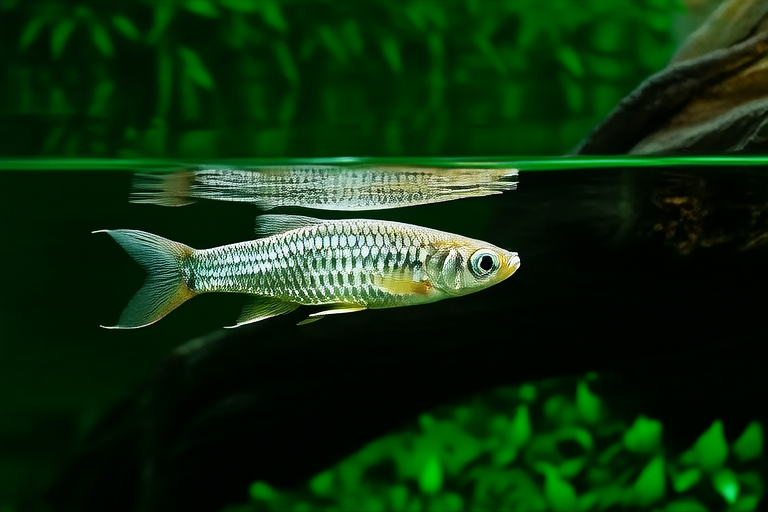Unleashing the Mystery: The Majestic World of Arowana
In the vast and diverse world of freshwater fish, few creatures capture the imagination like the arowana. Known for their striking appearance and rich history, these fish have long been subjects of fascination and admiration. This article delves into the unique characteristics, historical significance, and cultural importance of arowanas, providing a comprehensive guide for both enthusiasts and curious readers.
Introduction to Arowanas
The arowana, also known as dragonfish or bonytongues, belongs to the family Osteoglossidae. These ancient fish have existed for over 130 million years, making them living fossils that offer a glimpse into prehistoric times. Their unique features and behaviors have made them both scientifically intriguing and culturally significant. Found primarily in the tropical regions of South America, Africa, and Southeast Asia, arowanas are renowned for their intelligence and agility.
Physical Attributes
Arowanas are characterized by their elongated bodies, large scales, and powerful jaws. They possess a specialized tongue that helps them grasp prey with remarkable precision. Their scales are thick and armored, offering protection against predators. Some species can grow up to 3 feet in length, while others remain smaller. Their vibrant colors and reflective scales add to their allure, making them popular among aquarium enthusiasts.
Habitat Preferences
Natural habitats of arowanas include rivers, swamps, and floodplains with slow-moving waters and dense vegetation. These environments provide ample cover and hunting grounds. Arowanas prefer warmer climates, typically thriving in waters between 78°F and 84°F. They are often found in areas with abundant plant life, which not only provides shelter but also serves as a breeding ground for their prey.
Dietary Habits
Arowanas are carnivorous and opportunistic feeders, consuming a variety of small animals such as insects, crustaceans, and other fish. Their diet can vary depending on availability, but they generally prefer live prey. Their ability to leap out of the water to catch flying insects adds to their reputation as formidable hunters. In captivity, arowanas require a varied diet to maintain optimal health.
Different Species of Arowanas
Several species of arowanas exist, each with its own distinct characteristics:
- Silver Arowana (Osteoglossum bicirrhosum): Native to the Amazon Basin, this species is known for its silvery scales and long body. It is highly sought after in the aquarium trade due to its striking appearance and intelligence.
- Jardini’s Arowana (Scleropages jardini): Found in Australia, this species is less common in the aquarium trade but is valued for its unique appearance and behavior.
- Banded Arowana (Scleropages formosus): Also known as the Asian arowana, this species is native to Southeast Asia. It is particularly famous for its colorful scales and is considered a symbol of good luck in some cultures.
Conservation Status
Due to habitat destruction, overfishing, and the pet trade, several species of arowanas face significant threats. The International Union for Conservation of Nature (IUCN) has listed some species as vulnerable or endangered. Efforts are underway to protect these fish through captive breeding programs and habitat conservation initiatives.
Cultural Importance, Myths, and Beliefs
Arowanas hold a special place in many cultures, particularly in Southeast Asia. In Chinese culture, the arowana is often associated with prosperity and good fortune. It is believed that owning an arowana can bring wealth and success to its owner. This belief has led to the fish being a popular choice for decorative ponds and aquariums in many households.
Myths and legends surrounding arowanas vary across different cultures. Some believe that arowanas can predict storms or bring rain, while others view them as guardians of the water. These beliefs have contributed to the mystique surrounding these fish and have played a role in their conservation efforts.
Tips for Aquarium Enthusiasts
For those interested in keeping arowanas, it is crucial to understand the responsibilities involved. Arowanas require large tanks with ample space for swimming and hiding. They need a stable environment with appropriate water conditions, including temperature, pH levels, and filtration systems. Proper feeding is essential to ensure their health and longevity.
Responsible ownership involves understanding the legal requirements for keeping arowanas. Some countries have restrictions on importing or exporting these fish, and it is important to comply with local regulations. Additionally, choosing captive-bred specimens over wild-caught ones helps reduce pressure on natural populations.
Environmental considerations are also paramount. By supporting sustainable practices in the aquarium trade, enthusiasts can contribute to the preservation of these magnificent fish and their habitats.
Conclusion
The arowana is more than just a beautiful fish; it is a testament to the diversity and resilience of life on Earth. From their ancient origins to their cultural significance, these fish continue to captivate and inspire. As we learn more about their unique traits and behaviors, it becomes increasingly important to ensure their survival for future generations. Whether you are an enthusiast or simply curious, the world of arowanas offers endless fascination and wonder.
